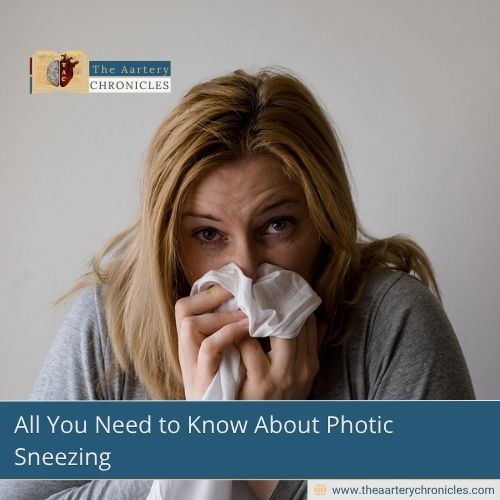

All You Need to Know About Photic Sneezing
Introduction
Photic sneezing is an involuntary reflex that occurs when a person sneezes in response to sudden exposure to bright light, such as sunlight or an artificial light source. This phenomenon, also known as the “heliotrophic reflex,” is more common than one might think and involves a combination of genetic and physiological factors that deserve further investigation.
The Mechanism Of Photic Sneezing
Photic sneezing occurs when bright light stimulates the trigeminal nerve, which is involved in nasal reflexes, via the optic nerve. This occurs because electrical signals generated by the sudden change in brightness are sent to the brain. In some people, these signals can “confuse” the nearby nerves that regulate the sneezing reflex, thus triggering a reaction. This phenomenon exemplifies the complexity of the nervous circuits in our body and the interaction between visual stimuli and physiological reflexes.
Why Do Some People Sneeze In The Sun?
The reason why some people experience photic sneezing while others don’t appear to be genetic. Studies suggest that this reaction is hereditary and occurs in a significant percentage of the population, estimated between 18% and 35%. This means that if one parent is prone to the reflex, their children are likely to be affected as well. Furthermore, it isn’t linked to any health problems, as it’s simply a natural variation in the nerves’ response to light.
The Origins And Meaning Of Photic Sneezing
The medical term for this phenomenon is “autosomal dominant photic sneeze reflex,” abbreviated to PSR. The fact that it occurs in some people but not others has led researchers to hypothesize that the reflex may have evolutionary origins. However, the reason why the reflex evolved or persists is not yet fully understood. Some suggest that it may be an involuntary protective mechanism to clear the nasal passages of particles or irritants, although this is only a theory.
When Does It Occur Most Frequently?
Photic sneezing most often occurs when a person moves from a dark environment to a very bright one, such as when leaving a building into sunlight. Some individuals may also experience it in the presence of bright artificial lights, such as camera flashes or fluorescent lights. This reflex may be more pronounced under certain conditions, such as when the nasal sensitivity is already present, such as with a cold or allergies.
Advice For Those Experiencing Photic Sneezing
Although benign, photic sneezing can be uncomfortable, especially in situations where a sudden sneeze could be uncomfortable, such as driving. Here are some practical tips for those who suffer from it:
- Use Sunglasses: Wearing sunglasses when going outdoors can reduce the intensity of light hitting your eyes, making it less likely to trigger sneezing.
- Avoid Sudden Changes in Light: Gradually moving from dark to bright environments can help mitigate glare.
- Pressing the Palate: Some people find it helpful to press the roof of their mouth with their tongue when they feel the urge to sneeze. This action can help “distract” the trigeminal nerve.
Conclusion
Photic sneezing, although not a health problem, is an interesting phenomenon that highlights the complexity of the mechanisms of our nervous system. For those who suffer from it, adopting a few simple strategies can help better manage this curious reaction.









